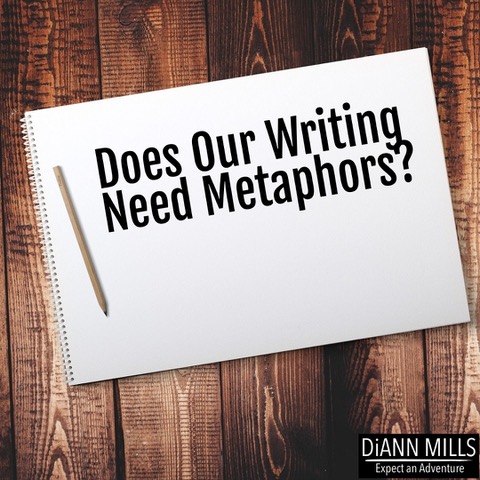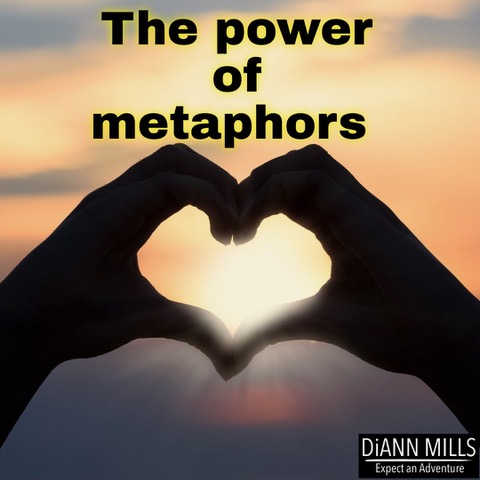
"Cleverly written figurative language bursts onto the page with symbolism, adding power to the manuscript."
A metaphor is a word or phrase that uses one object or idea in place of another to suggest a connection between them. Cleverly written figurative language bursts onto the page with symbolism, adding power to the manuscript. In fiction, the writer crafts a metaphor according to a character’s personality and life experiences. This eliminates clichés that are dull and instead introduces something exciting and original.
A writer who uses metaphors shows how a character expresses feelings and opinions. The specialty of this literary technique involves using words and phrases unique to the character. The literary technique sprinkles the page with life.

Metaphors Add Four Dynamics to the Manuscript.
-
Creativity blends the reader’s imagination with the character’s personality. Be bold. Be brave.
Explore new concepts by creating metaphors in every part of speech. List the words and phrases in a file where you can access them. Remember to massage the metaphor to fit the character. One character might interpret a metaphor one way, while another character provides another perspective.
-
Emotion allows the reader to participate in what is happening in the story by measuring the sensation according to personal knowledge and life experiences.
-
Reader experience is intensified by introducing culture, language, ideas, setting, and more in a world different from their own, filling in the gaps in the reader’s understanding and adding meaning to their world with powerful imagery,
Metaphors are not to confuse the reader but for their enjoyment. Writers want to be congratulated, encouraged, and remembered for their stories.
-
“Show, don’t tell” is overcome when using figurative language that expresses or demonstrates the differences or similarities of something tangible or intangible.
The easiest way to describe a metaphor is to consider it a symbol. Symbolism touches the reader with a subtle understanding. Suddenly the weather, the rushing water, a distinctive personality, color, or the way the stars light up the night mean something more.
A simile uses the word “as” or “like” to show a comparison. A simile is always a metaphor, but a metaphor is not always a simile.
*His room is clean as a whistle. (simile)
*She’s cool as a cucumber. (simile)
*The horse was a gust of wind. (metaphor)
*She’s a fish in water. (metaphor)
How to Develop Metaphors
-
Use sparingly to add a hint of spice. Too many spices overpower the flavor of the story.
-
Use language appropriate to the genre.
A romance novel would not contain the same type of metaphors as horror, fantasy, historical, science fiction, suspense, children’s story, etc.
-
Use language relatable to the character’s career, education, and life experiences.
Consider a farmer, lawyer, health care provider, member of the armed forces, scientist, and more.
-
Use various symbols such as colors and numbers that have different meanings according to context.
Common Metaphors
-
You are my sunshine.
-
Get an education or you’ll be sitting in the dark.
-
Night covered her like a shroud.
-
He is two-faced and a rat.
-
He spits his words like venom.

Your Turn to Create a Metaphor
Construct a metaphor that weaves everything about your character and genre together to create a vivid and fresh picture. Share your writing!
DiAnn Mills is a bestselling author who believes her readers should expect an adventure. She weaves memorable characters with unpredictable plots to create action-packed, suspense-filled novels with threads of romance. DiAnn believes every breath of life is someone’s story, so why not capture those moments and create a thrilling adventure?
Her titles have appeared on the CBA and ECPA bestseller lists; won two Christy Awards, Golden Scroll, Inspirational Readers’ Choice, and Carol award contests.
